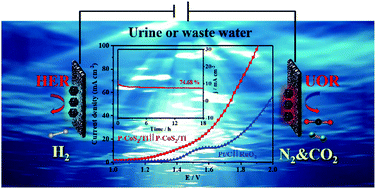The urea oxidation reaction (UOR) is an ideal alternative to the oxygen evolution reaction (OER) towards energy efficient hydrogen production. However developing Earth-abundant electrocatalysts for urea oxidation and hydrogen generation still remains a big challenge. Herein, porous CoS2 nanosheet self-interconnected networks with high oxidation states located on a Ti-mesh (P-CoS2/Ti) are synthesized and can act as a high activity catalyst for both the hydrogen evolution reaction (HER) and urea oxidation reaction (UOR). In this literature, we report a very interesting phenomenon that cobalt hydroxide with different chemical compositions and crystal structures can be synthesized by adjusting the concentration of NaOH during the etching process. Moreover, porous CoS2 nanosheets with different crystallite sizes can be synthesized by adjusting the sulfuration temperature. P-CoS2/Ti presents outstanding catalytic performance with an overpotential of 91 mV to deliver a current density of 10 mA cm−2 for the HER, and it gives an anode potential of 1.243 V vs. RHE at 10 mA cm−2 for the UOR. A two-electrode electrolyser is used to validate the catalyst performance, and the P-CoS2/Ti||P-CoS2/Ti electrode is capable of producing a current density of 10 mA cm−2 at a cell potential of only 1.375 V, demonstrating its potential feasibility in the practical application of efficient hydrogen production.

